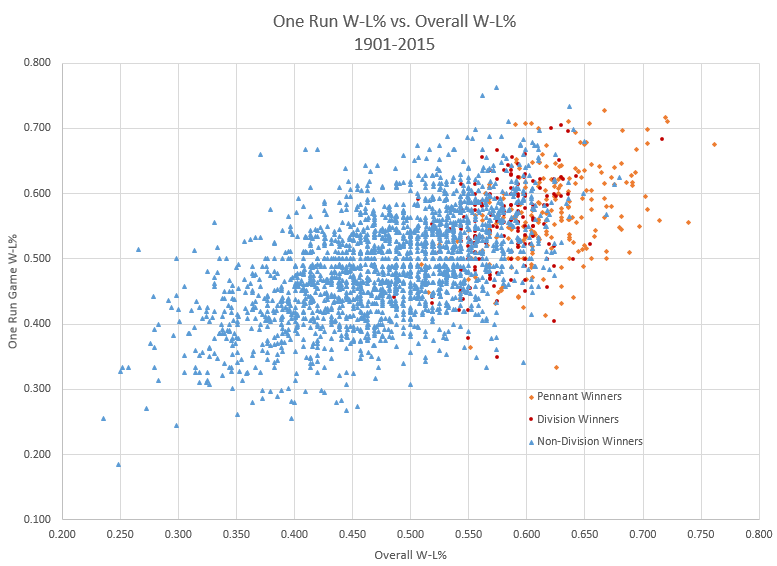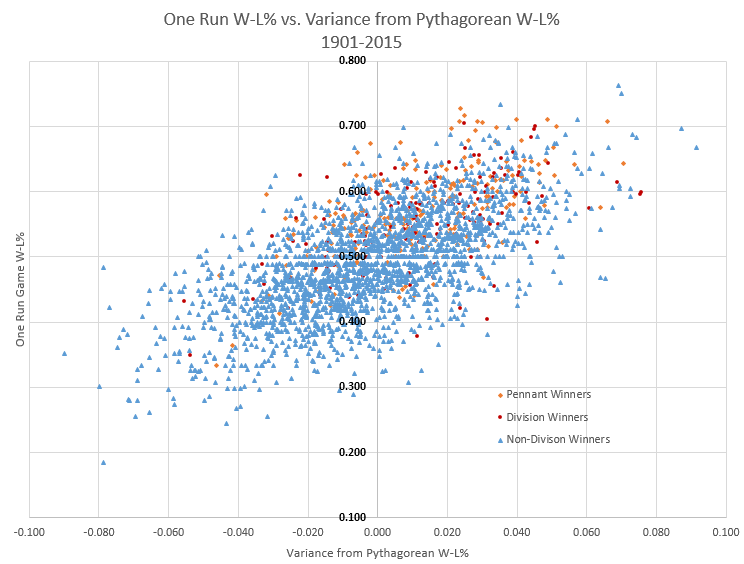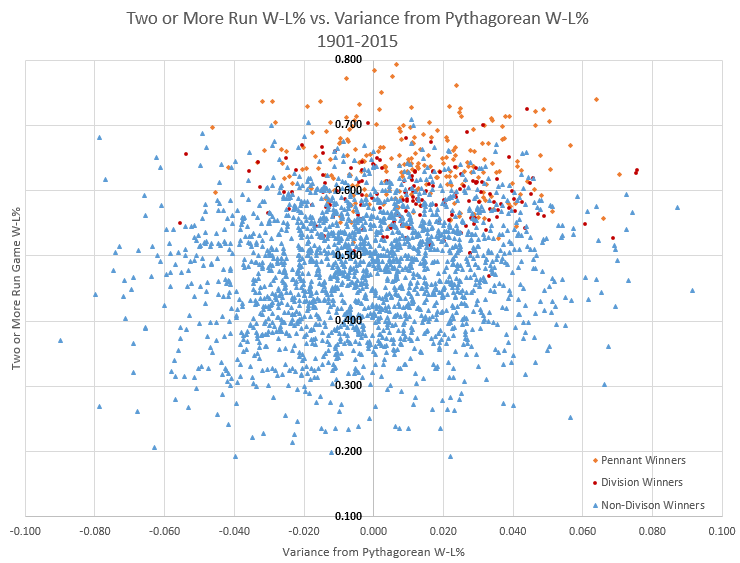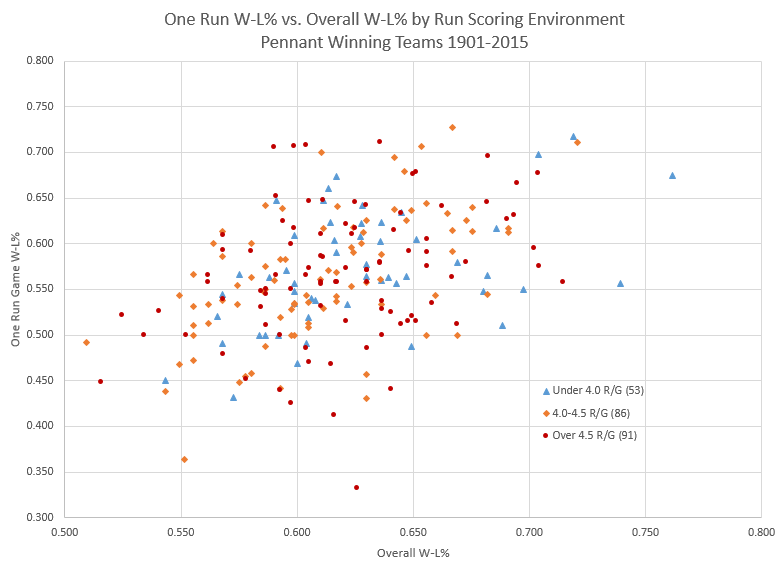The Texas Rangers, leaders in the AL West, have posted a sparkling 19-7 (.731) record in one-run games this season, reminiscent of the Orioles’ record-breaking 29-9 (.763) mark in that situation in 2012. Barely missing the ALCS last season, could the Rangers be poised to take that next step this year? I’ll take a look at that question after the jump.
If Texas maintains a .700 winning percentage in one run game, they would become just the 16th team since 1901 with that accomplishment. Nine of those other 15 teams were pennant winners, two won a division and the 2012 Orioles won the wild card game before extending the Yankees to the limit in a memorable ALDS (the other three teams all finished second, two of them just one game behind the leader). With that pedigree, it shouldn’t be a surprise that winning percentage in one-run games correlates strongly with overall winning percentage as illustrated in the chart below.
 Among other things, the chart shows that no team with a .650 winning percentage (105-57) has posted a losing record in one-run games, and only two teams have won a pennant with a winning percentage under .400 in one-run games.
Among other things, the chart shows that no team with a .650 winning percentage (105-57) has posted a losing record in one-run games, and only two teams have won a pennant with a winning percentage under .400 in one-run games.
As would be expected, there is also strong correlation between winning one-run games and posting a positive Pythagorean deviation, as shown.
Even a .600 winning percentage in one-run games almost guarantees a positive Pythagorean deviation, something that can’t be said for the same winning percentage in games decided by two or more runs.
The chart above is showing very weak correlation (if any) between Pythagorean deviation and success in games decided by two or more runs. That said, you do need to have a winning record in those games to win a pennant, and probably a .600 record to give yourself a good chance at the post-season, especially if you don’t exceed your Pythagorean projection.
The last chart below is looking at the importance of succeeding in one-run games relative to run-scoring environment.
Looking only at pennant-winning teams, only 9 of 230 posted a winning percentage below .450 in one-run games, and just one of those 9 came in a season with fewer than 4 runs per team game. Below a .500 record adds twenty more pennant winners, but only four of those come from the lowest run scoring seasons. So, as would be expected, being successful in one-run games becomes a more important attribute of pennant winning teams as the level of offense diminishes.
So, where does this leave the Rangers? First, they’ll need to snap out of their current 4-12 slump pretty quickly to maintain post-season aspirations. Second, they’ll likely need to start winning more games decided by more than one run. Currently, Texas has a negative run differential in those games and are thus fortunate to have posted a 36-32 record (.529) in that situation. Only two teams have won a pennant with a lower winning percentage in games decided by two or more runs: the 1973 Mets (.520) and 1987 Twins (.526).
To close, here’s a table with some one-run game team superlatives.
[table id=296 /]



